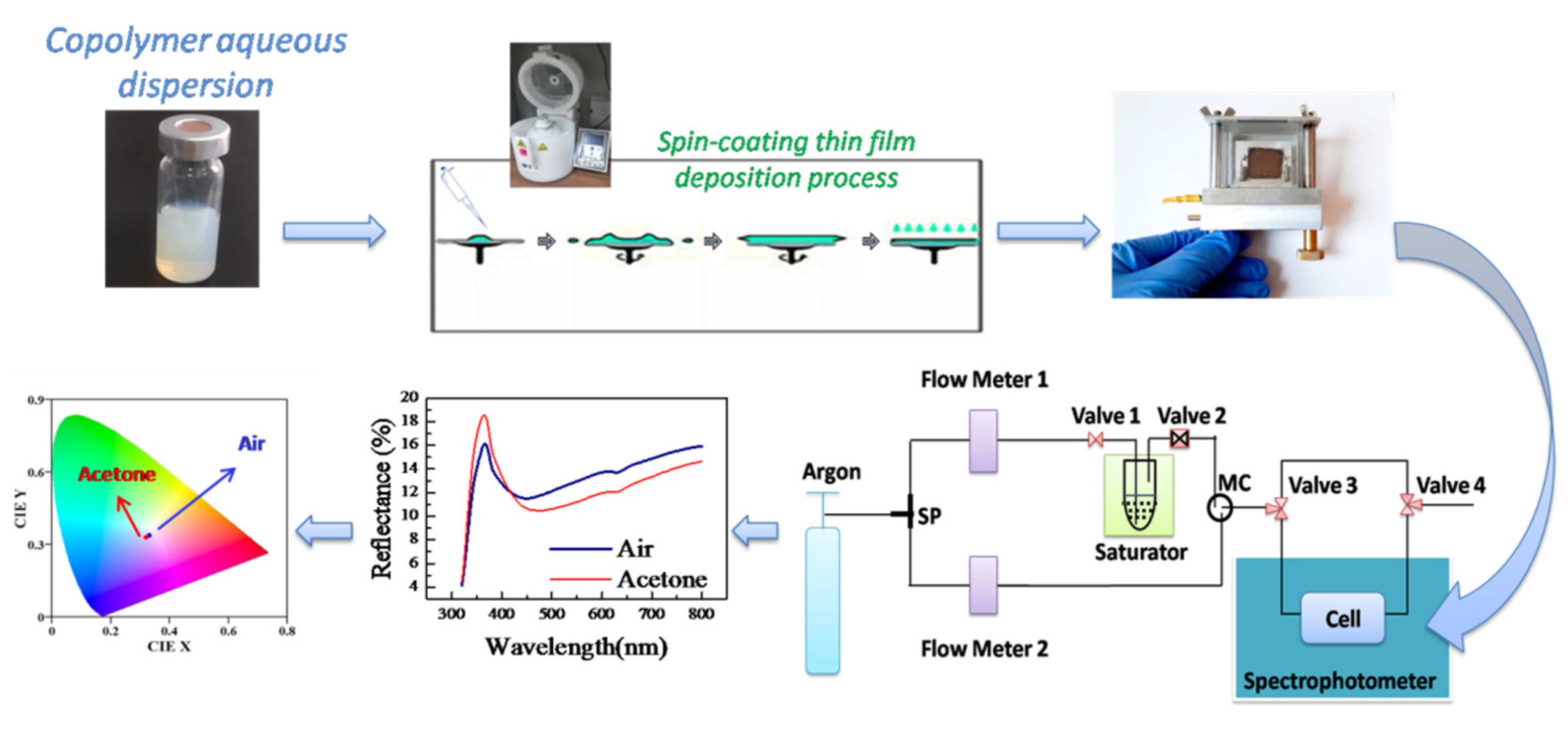Optical Characterization of Acetone-Sensitive Thin Films of poly(vinyl alcohol)-g-poly(methyl acrylate) †
Supplementary Materials
Funding
Acknowledgments
Conflicts of Interest
References
- Malik, R.; Tomer, V.K.; Mishra, Y.K.; Lin, L. Functional gas sensing nanomaterials: A panoramic view. Appl. Phys. Rev. 2020, 7, 021301. [Google Scholar] [CrossRef] [Green Version]
- Lazarova, K.; Vasileva, M.; Marinov, G.; Babeva, T. Optical characterization of sol-gel derived Nb2O5 thin films. Opt. Laser Technol. 2014, 58, 114–118. [Google Scholar] [CrossRef]

Publisher’s Note: MDPI stays neutral with regard to jurisdictional claims in published maps and institutional affiliations. |
© 2021 by the authors. Licensee MDPI, Basel, Switzerland. This article is an open access article distributed under the terms and conditions of the Creative Commons Attribution (CC BY) license (https://creativecommons.org/licenses/by/4.0/).
Share and Cite
Lazarova, K.; Bozhilova, S.; Ivanova, S.; Christova, D.; Babeva, T. Optical Characterization of Acetone-Sensitive Thin Films of poly(vinyl alcohol)-g-poly(methyl acrylate). Chem. Proc. 2021, 5, 41. https://doi.org/10.3390/CSAC2021-10416
Lazarova K, Bozhilova S, Ivanova S, Christova D, Babeva T. Optical Characterization of Acetone-Sensitive Thin Films of poly(vinyl alcohol)-g-poly(methyl acrylate). Chemistry Proceedings. 2021; 5(1):41. https://doi.org/10.3390/CSAC2021-10416
Chicago/Turabian StyleLazarova, Katerina, Silvia Bozhilova, Sijka Ivanova, Darinka Christova, and Tsvetanka Babeva. 2021. "Optical Characterization of Acetone-Sensitive Thin Films of poly(vinyl alcohol)-g-poly(methyl acrylate)" Chemistry Proceedings 5, no. 1: 41. https://doi.org/10.3390/CSAC2021-10416
APA StyleLazarova, K., Bozhilova, S., Ivanova, S., Christova, D., & Babeva, T. (2021). Optical Characterization of Acetone-Sensitive Thin Films of poly(vinyl alcohol)-g-poly(methyl acrylate). Chemistry Proceedings, 5(1), 41. https://doi.org/10.3390/CSAC2021-10416





